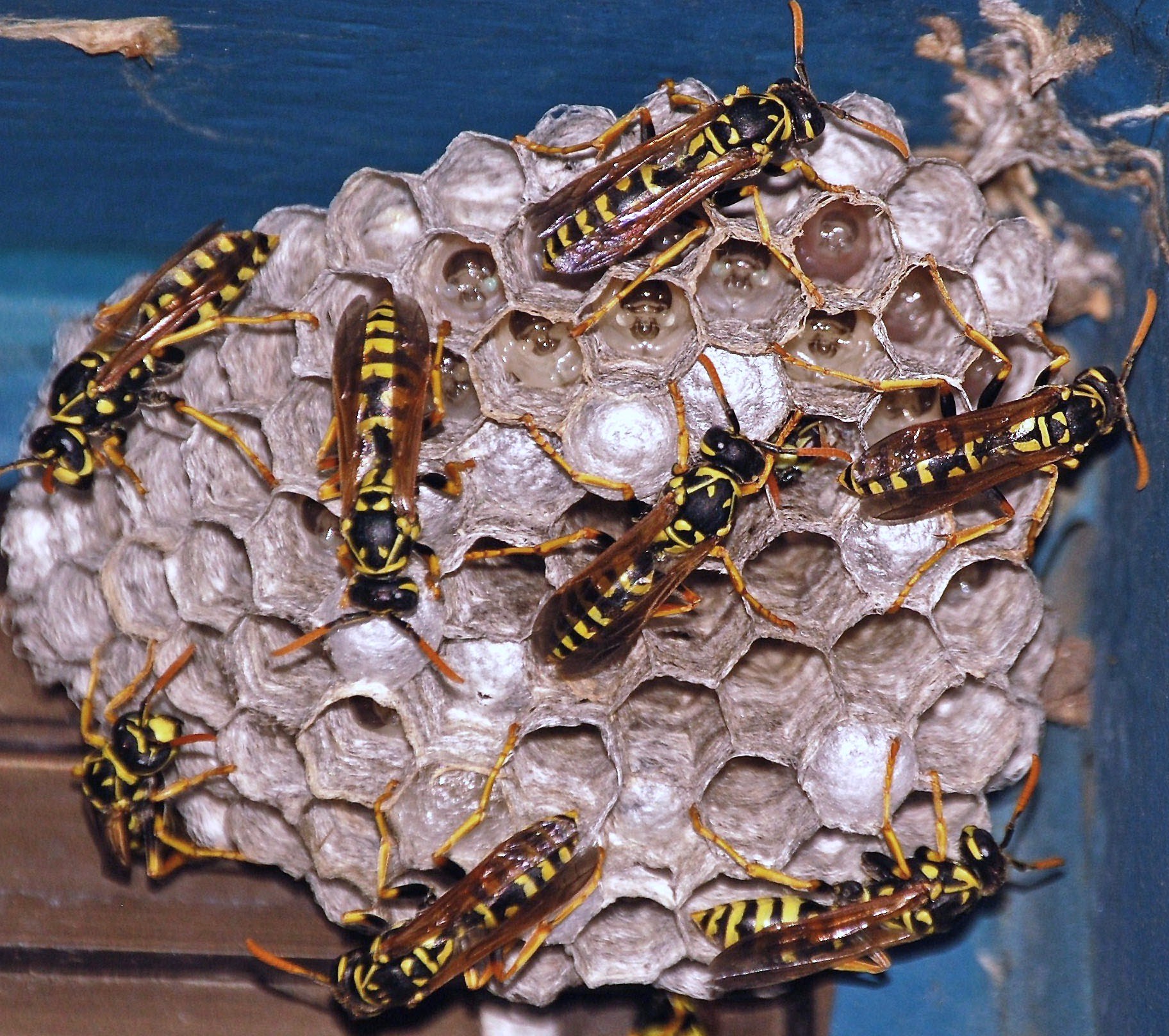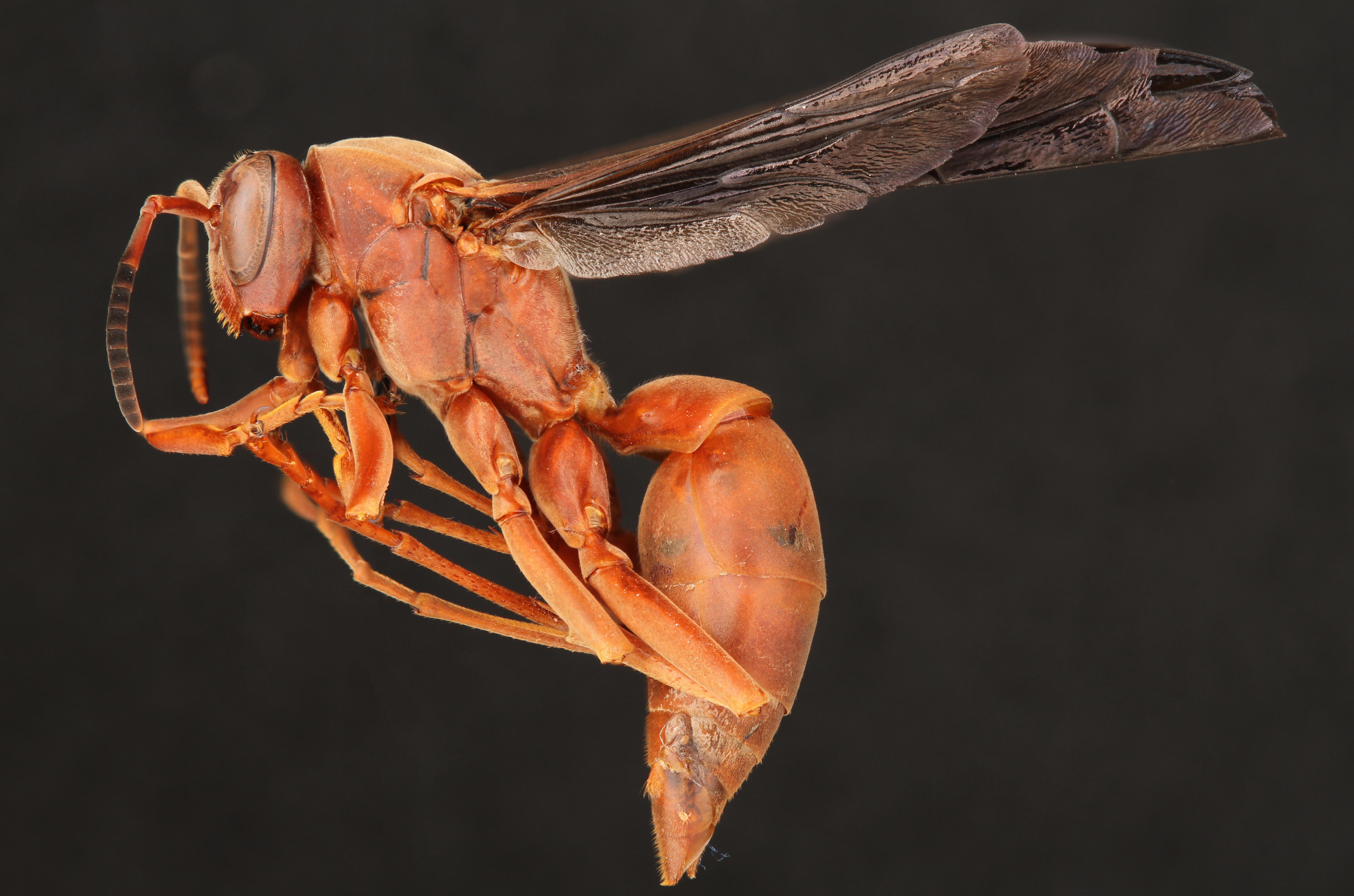wasp life cycle wikipedia
When the wasp larva hatches it drops and starts to feed upon the supplied prey for a few weeks before pupating. With most species an alternation of generations occurs with one two-sex generation and one parthenogenic generation annually whereas some species produce very few males and reproduce only by parthenogenesis.
The Wasp Life Cycle When Do Wasps Die Off Hullternative
They develop from eggs into larvae then pupa and finally adults.

. Whats distinctive about wasps is the adaptation of the ovipositor for the parasitoid lifestyle. In total it takes approximately 28-48 days from egg to adult although the length of time spent in each stage is determined by environmental conditions. The most common social wasps are paper wasps yellow jackets and hornets.
One colony cycle lasts for about 611 months and each colony cycle produces around 30008000 larvae. Wasps like most insects go through 4 stages of development. Some species lay the egg in the opening of the cell suspended from a thread of dried fluid.
A female wasp will search the ground and tree trunks for a spider and upon finding one will sting it paralyzing the spider. Pupation takes 8-18 days before an adult worker wasp emerges. The length of the tube specializes in reaching where the mother lays the eggs.
The queen wasp builds small cells and lays 200 to 300 eggs in a day. Once these eggs have been laid the existing queen will not lay any further eggs. As a normal rule the adult wasp lays a single egg in the empty cell before provisioning it.
The solitary wasps life cycle is too varied to be discussed here in a generic fashion. These colonies typically only last the spring and summer and are not used again. Once inside they oviposit within the caterpillars and escape the nest by releasing a chemical which causes the worker ants to fight each other rather than the intruding wasp.
Unlike many other families in the order Hymenoptera wasps in this family are solitary and nest alone. The life cycle of social wasps. Hornets insects in the genus Vespa are the largest of the eusocial wasps and are similar in appearance to their close relatives yellowjacketsSome species can reach up to 55 cm 22 in in length.
These wasps act as parasites to either the fig or possibly the pollinating wasps. The reproduction of the gall wasp is partly parthenogenesis in which a male is completely unnecessary and partly two-sex propagation. Once they have achieved adult status male wasps or drones as they are often referred to as tend to die off in the winter a lack of food and the cold weather conditions mean they struggle to survive.
The fertilized female wasp queen hibernates during the winter season. The agamic generation consists of only female wasps which measure approximately 25 mm in length. Citation needed The extraordinary adaptation skills of V.
The pointed head is black with pale brown eyes and long clear wings are present with dark brown veins and hairs. The cuckoo wasps egg hatches first and the larva eats the food that is stored for the Mud-daubers young. As the nest reaches its maximum size towards the end of summerbeginning of autumn the queen will lay queen eggs and drone unfertilized eggs.
The male deposits his sperms in the queen wasp. Once the spider is paralyzed the female wasp will make a burrow or take the spider to a previously made burrow. After going through the pupal.
After the female wasp lays her eggs and follows through with pollination she dies. As the fig develops the wasp eggs hatch and develop into larvae. Each wasp colony includes one queen and a number of sterile workers.
1 Queen lays Eggs. Let us see the different stages in a social wasps life cycle. Life Cycle and Diet.
Unlike bees wasps do not reproduce via mating flights. Life Cycle of Wasp. The reproduction involves a fertile queen and a male worker wasp who mate.
New queens and males drones are produced towards the end of the summer and after mating the queen overwinters in a hole or other sheltered location sometimes in buildings. In order to understand when a wasp will die off it is important to consider their lifecycle. Vulgaris enable it to live in a wide range of habitats from very humid areas to artificial environments such as gardens and human structures.
The queen wasp chews wood materials and spits the remaining parts which is used for making the nest. Life cycle Agamic generation. Each nest will produce around 10001500 new queens.
However in areas with mild. After five moults over about 15 days each larva spins a silken cap over the cell and pupates. Colonies usually last only one year with all but the queen dying at the onset of winter.
Life history cycle On finding the eggs or the nest containing eggs of a suitable species such as the Mud-dauber Wasp the female cuckoo wasp lays an egg next to the egg of the host species. The queen wasps emerge after their hibernation period is over and start building a nest for themselves. Their populations are characterized by colonies within papery nests either above or below ground composed of hexagonal cells for their larvae.
They are distinguished from other vespine wasps by the relatively large top margin of the head and by the rounded segment of the abdomen just behind the waist. The complete lifecycle may last from a few weeks to more than a year from the egg. Wasps have a conventional life cycle for insects.
The wasp eggs then hatch inside the caterpillar and eventually consume. After pollination there are several species of non-pollinating wasps that deposit their eggs before the figs harden.

Brachygastra Mellifica Wikipedia
The Wasp Life Cycle When Do Wasps Die Off Hullternative

Life Cycle Of The Host And The Parasitoid Inset Shows The Picture Of A Download Scientific Diagram



